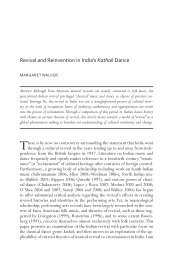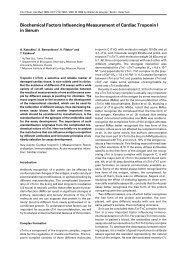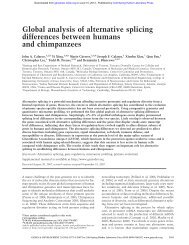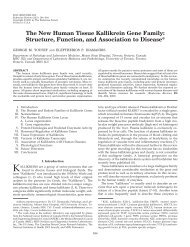Democratic Breakthroughs and Revolutions in Five Post-Communist ...
Democratic Breakthroughs and Revolutions in Five Post-Communist ...
Democratic Breakthroughs and Revolutions in Five Post-Communist ...
Create successful ePaper yourself
Turn your PDF publications into a flip-book with our unique Google optimized e-Paper software.
28Croatia, Serbia <strong>and</strong> Ukra<strong>in</strong>e the ancien regime reta<strong>in</strong>ed a support base that enabled itto return to power either reformed (Croatia), unreformed (Serbia) or its policiesunknown (Ukra<strong>in</strong>e). The HZDS <strong>and</strong> its nationalist allies cont<strong>in</strong>ued to comm<strong>and</strong> thesupport of 30 percent of Slovaks <strong>in</strong> the 2002 elections on the eve of NATO <strong>and</strong> EUmembership.Follow<strong>in</strong>g the defeat of the ancien regime <strong>in</strong> Slovakia, Croatia, Serbia, <strong>and</strong>Ukra<strong>in</strong>e the democratic opposition coalitions dis<strong>in</strong>tegrated, permitt<strong>in</strong>g the return offormer ancien regime parties <strong>in</strong> subsequent elections. Often this followed strategicpolicy mistakes committed by the democratic opposition <strong>and</strong> the open<strong>in</strong>g up ofdivisions between moderates <strong>and</strong> radicals. Meciar’s HZDS won the 1994 <strong>and</strong> 1998elections <strong>in</strong> Slovakia <strong>and</strong> only <strong>in</strong> 2002 did it receive fewer votes than the left orcenter-right. With its nationalist allies, the HZDS won 40.5, 36.1 <strong>and</strong> 29.8 percent ofthe vote <strong>in</strong> these three elections. By the 2002 elections, Slovakia had achieved ademocratic breakthrough over populist-nationalist forces who could not deraildemocratic progress <strong>and</strong> the country’s membership of NATO <strong>and</strong> the EU. In Croatiasoftl<strong>in</strong>ers <strong>in</strong> the HDZ supported its transformation <strong>in</strong>to a center-right conservativeparty, a process similar to reformers from the Franco regime’s National Movement(Spanish Traditionalist Phalanx of the Assemblies of National-Syndicalist Offensive)who created the center-right Popular Party led by Jose Maria Aznar. In Croatia theHDZ returned to power <strong>in</strong> 2003 after defeat<strong>in</strong>g the centre-left coalition that had beenelected four years earlier. Its return to power did not derail Croatia’s democraticprogress <strong>and</strong> likely membership of NATO <strong>and</strong> the EU at the end of the decade.In Georgia there is no likelihood of the return of political forces loyal toShevardnadze. In Serbia <strong>and</strong> Ukra<strong>in</strong>e the ancien regime is more entrenched. In Serbiatwo pillars of the Milosevic regime, the Socialist <strong>and</strong> Radical Parties, cont<strong>in</strong>ue to
















